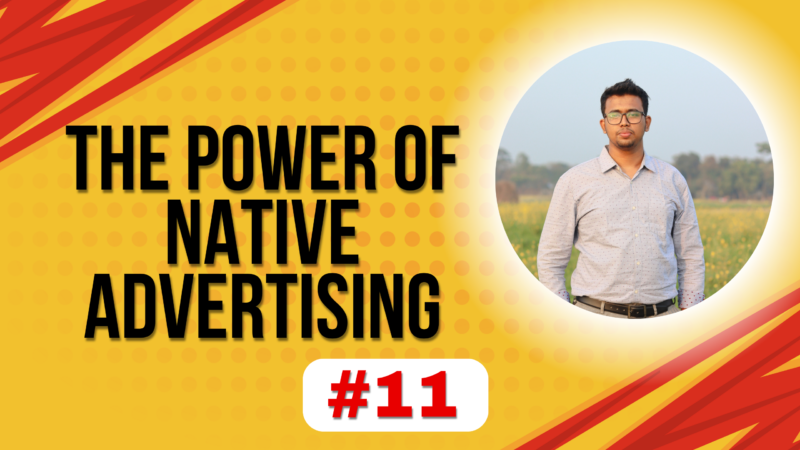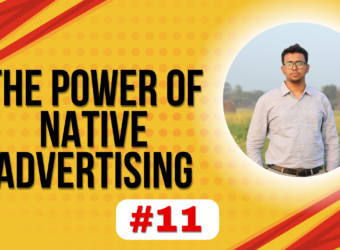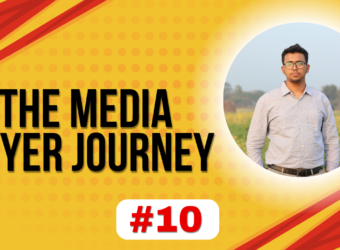Hi, I’m Michael
Web designer and developer working for envato.com in Paris, France.

My Experience

Software Develop.
Co-Founder
Microsoft Corporation

Web Design.
Founder, XYZ IT Company
Reinvetning the way you create websites

Teacher and Developer
SuperKing LTD
Sr. Software Engineer
Education

BSc in Computer Science
University of DVI
New Haven, CT ‧ Private, non-profit

AS - Science & Information
SuperKing College
Los Angeles, CA 90095, United States

Secondary School Education
Kingstar Secondary School
New Haven, CT ‧ Private, non-profit
My Resume
Education Quality
BBA in Accounting
Mohammadpur Central University (2018 - 2022)Completing BBA - Honours from Accounting.
HSC in Business Studies
Abdul Wahab Degree College (2016 - 2017)Completing Higher Secondary School Certificate Examination from Business Studies Groups.
SSC in Business Studies
Khilpara ML High School (2013 - 2014)Completing Secondary School Certificate Examination from Business Studies Groups.
Job Experience
Manager
Accounts & Operation Dpt. (2022 - 2023)I have worked as Manager in Accounts Department at OMS Trading International
Assistant Manager
Accounts & Finance Department (2020- 2021)I have worked as Assistant Manager in Accounts Department at MIGHT Corporation
Senior Executive
Accounts & IT Department (2018 - 2020)I have worked as Sr. Executive in Accounts Department at Sysmark Limited
Skills Score
Ecommerce Store Development
Web Development & Designing
Digital Marketing
Photoshop
Skills Score
Microsoft Office Application
Accounts, Finance and Commercial
Content/Article Writing
Communication
Education Quality
BBA in Accounting
Mohammadpur Central University (2018 - 2022)Completing BBA - Honours from Accounting.
HSC in Business Studies
Abdul Wahab Degree College (2016 - 2017)Completing Higher Secondary School Certificate Examination from Business Studies Groups.
SSC in Business Studies
Khilpara ML High School (2013 - 2014)Completing Secondary School Certificate Examination from Business Studies Groups.
Job Experience
Manager
Accounts & Operation Dpt. (2022 - 2023)I have worked as Manager in Accounts Department at OMS Trading International
Assistant Manager
Accounts & Finance Department (2020- 2021)I have worked as Assistant Manager in Accounts Department at MIGHT Corporation
Senior Executive
Accounts & IT Department (2018 - 2020)I have worked as Sr. Executive in Accounts Department at Sysmark Limited
Education Quality
BBA in Accounting
Mohammadpur Central University (2018 - 2022)Completing BBA - Honours from Accounting.
HSC in Business Studies
Abdul Wahab Degree College (2016 - 2017)Completing Higher Secondary School Certificate Examination from Business Studies Groups.
SSC in Business Studies
Khilpara ML High School (2013 - 2014)Completing Secondary School Certificate Examination from Business Studies Groups.
Job Experience
Manager
Accounts & Operation Dpt. (2022 - 2023)I have worked as Manager in Accounts Department at OMS Trading International
Assistant Manager
Accounts & Finance Department (2020- 2021)I have worked as Assistant Manager in Accounts Department at MIGHT Corporation
Senior Executive
Accounts & IT Department (2018 - 2020)I have worked as Sr. Executive in Accounts Department at Sysmark Limited
My Portfolio
My Blog

How MAHAVIN Consultants Filter Their Facebook Traffic and Best Practices to Get 5M Traffic per Month
In today’s competitive digital landscape, generating and filtering high-quality traffic from social media platforms like Facebook is a crucial strategy for achieving large-scale engagement and conversions.
MAHAVIN Consultancy, a digital marketing powerhouse with over 8 years of experience, has honed its approach to traffic management and optimization. With a proven blueprint for scaling Facebook traffic to the impressive benchmark of 5 million visits per month, MAHAVIN shares its best practices for filtering and maximizing social media traffic.
Step 1: Audience Segmentation and Targeting
One of the most critical aspects of MAHAVIN’s strategy is detailed audience segmentation. By carefully defining the target audience and breaking it down into smaller, focused groups, MAHAVIN is able to create highly relevant ad content and messaging.
- Creating Personas: MAHAVIN Consultants craft detailed customer personas based on age, gender, location, interests, online behaviors, and spending habits. This granular view helps them create Facebook ad sets that are incredibly targeted, ensuring that their message resonates deeply with each segment.
- Leveraging Facebook’s Lookalike Audiences: The team at MAHAVIN uses Lookalike Audiences to reach new users who are similar to their existing customers. This tool is particularly powerful in reaching users who are likely to engage with their ads and ultimately convert, all while minimizing waste in ad spend.
Step 2: Implementing Advanced Filtering Techniques
Once the right audience is targeted, MAHAVIN focuses on filtering out unqualified traffic. This approach is integral to ensuring that each visit aligns with the brand’s objectives, and it saves on budget by avoiding low-quality clicks.
- Setting Up Negative Targeting: To avoid unwanted clicks, MAHAVIN excludes certain groups that are unlikely to convert or that fall outside their demographic scope. This can include filtering by age ranges, locations, or interests that don’t align with the brand’s ideal buyer.
- Traffic Quality Control through A/B Testing: A/B testing is a staple of MAHAVIN’s filtering process. By continually testing ad creatives, CTAs, and landing pages, MAHAVIN gains insight into which formats drive the highest-quality traffic. Low-performing ads are phased out, and budget is reallocated to the top-performing variations, optimizing for relevance and engagement.
- Utilizing Custom Conversions for Precision: To filter further, MAHAVIN leverages Facebook’s custom conversions. This feature allows them to track specific events (like purchases, sign-ups, or downloads) instead of just link clicks. This helps in focusing on traffic that completes meaningful actions, ensuring better ROI.
Step 3: Optimizing Ad Creative and Content
At the core of MAHAVIN’s strategy is creating ads that don’t just attract clicks but also engage the audience meaningfully. Quality content and strong visuals are crucial for this.
- Dynamic Content Ads: MAHAVIN uses Facebook’s dynamic ads feature to serve personalized ad content to users. Dynamic ads automatically show the most relevant items from their catalog, keeping content fresh and tailored, which significantly boosts engagement and conversion rates.
- Compelling Visuals and Video Content: Research shows that Facebook users are highly responsive to video content. MAHAVIN leverages high-quality visuals, videos, and carousels to capture attention, while ensuring that the design aligns with the brand’s identity. Engaging visuals increase click-through rates (CTR) and reduce bounce rates, a crucial factor in achieving high monthly traffic.
Step 4: Driving High Traffic with a Multi-Platform Strategy
While Facebook is a major player, MAHAVIN Consultants recognize the need for an omnichannel approach. By combining Facebook with other traffic sources like Instagram, Messenger, and even external content platforms, they create an integrated strategy that strengthens the brand’s reach.
- Cross-Promoting with Instagram and Messenger: Since Facebook and Instagram are connected, MAHAVIN often expands campaigns to Instagram and Messenger, allowing for a broader reach. This approach helps in driving additional quality traffic while benefiting from the same audience data and targeting precision.
- Leveraging Paid Media on Complementary Platforms: Beyond Facebook’s ecosystem, MAHAVIN also taps into other ad platforms for cross-channel retargeting. By ensuring that users encounter the brand across various touchpoints, they maximize the chances of conversions and ensure that their monthly traffic target is consistently met.
Step 5: Employing a Data-Driven Optimization Process
Data analytics is at the heart of MAHAVIN’s traffic strategy. By analyzing traffic data and conversion metrics in real-time, MAHAVIN can adjust their campaigns dynamically to maximize efficiency and performance.
- Using Facebook’s Analytics Tools: MAHAVIN’s in-house reporting tool integrates with Facebook’s analytics, offering real-time insights into campaign performance. This includes monitoring metrics like CTR, cost per acquisition (CPA), and conversion rates to ensure that they’re reaching the desired 5 million visits per month goal.
- Setting Benchmarks and KPIs: For each campaign, MAHAVIN establishes KPIs that align with its monthly traffic goals. By continuously monitoring these metrics, the team can make data-informed decisions, from reallocating ad spend to modifying audience targeting parameters.
- Employing Automation for Scalability: Automation plays a key role in scaling traffic without compromising quality. MAHAVIN uses automation tools to manage budget pacing, retarget visitors, and optimize bids, allowing them to maintain high traffic volumes without extensive manual intervention.
Best Practices for Scaling to 5 Million Visits per Month
For those looking to replicate MAHAVIN’s success in driving significant monthly traffic from Facebook, here are some practical best practices:
- Define and Refine Your Audience Constantly: Keep testing and refining your audience segments to ensure precision targeting.
- Use Video and Interactive Content: Videos, stories, and carousel ads often yield higher engagement and CTR.
- Test, Optimize, and Retarget: Implement continuous A/B testing, and retarget users who engage but don’t convert immediately.
- Invest in High-Quality Visuals: Visuals make a lasting impression and often drive users to take action.
- Leverage Data Analytics and Automation: Real-time analytics and automation streamline the scaling process, making large-scale traffic generation manageable and cost-effective.
Conclusion
With a carefully structured approach that combines audience segmentation, filtering techniques, optimized content, and a data-driven strategy, MAHAVIN Consultants has set a high bar for digital marketing success.
Their proven methods enable them to consistently generate 5 million visits per month, offering a blueprint for businesses aiming to achieve substantial traffic growth. By following these best practices, businesses can elevate their Facebook campaigns to new heights, transforming traffic generation into a powerful growth engine.

The Power of Native Advertising: A Guide to Success
In an era where consumers are increasingly sophisticated and selective about the content they engage with, traditional advertisements are often bypassed or ignored. This is where native advertising comes into play, blending in seamlessly with the content and providing a powerful way to engage users.
A well-crafted native ad can be far more effective than traditional ads, offering a non-intrusive approach that resonates better with audiences. Here, we’ll dive into the essentials of creating a powerful native ad, discuss its benefits, and offer tips for maximizing impact.
What is Native Advertising?
Native advertising is a form of paid media where the ad experience follows the natural form and function of the user experience on the platform where it’s published. This means that, unlike traditional ads, native ads look, feel, and function like the surrounding content, appearing within feeds, recommended content, or search results without disrupting the user experience.
Examples of native ads include sponsored posts on social media, in-feed ads on content platforms, or even suggested reading sections on news sites. Because these ads feel natural to the environment they’re in, they’re often more engaging and less likely to be ignored.
Why Native Ads Are So Powerful
The power of native advertising lies in its subtlety and relevance. Here are some reasons why native ads outperform traditional formats:
1. Non-Intrusive User Experience: Native ads are designed to blend in, so they don’t interrupt the user experience. They’re seen as part of the content rather than an interruption, which increases engagement.
2. Higher Engagement Rates: Studies show that native ads have higher click-through rates (CTR) than traditional ads because they appear in context and align more naturally with user intent.
3. Improved Brand Trust: Consumers often perceive native ads as more credible since they’re aligned with the platform’s content. When executed well, native advertising can foster trust and credibility for the brand.
4. Content-Based Appeal: Native ads allow brands to provide value to the reader through content, storytelling, or useful information, creating a more meaningful interaction compared to standard display ads.
5. Adaptability Across Platforms: Native advertising can be adapted to almost any platform, from social media and search engines to eCommerce and streaming services, allowing brands to reach users wherever they spend time.
Characteristics of a Powerful Native Ad
A powerful native ad is one that connects with the audience without feeling like an advertisement. Here are some of its key elements:
1. Seamless Integration: The ad should match the format, tone, and style of the platform. Consistency with the platform’s look and feel is critical.
2. Relevant and Valuable Content: Powerful native ads provide real value to users, whether through educational content, entertainment, or helpful information that aligns with their interests.
3. Clear, Yet Subtle Branding: While the ad should blend in, it’s essential that users can identify the brand behind the message, typically achieved through logos or discreet brand mentions.
4. Strong Call-to-Action (CTA): A subtle, effective CTA directs the audience to the next step, whether that’s learning more, signing up, or making a purchase, without being pushy or overly promotional.
5. Mobile-Friendly: With the majority of internet traffic now on mobile, a powerful native ad needs to be optimized for smaller screens to ensure readability and engagement.
Best Practices for Native Advertising Success
To maximize the impact of native advertising campaigns, here are some proven strategies:
1. Understand the Audience: Knowing your audience’s interests, behavior, and preferences is essential. This helps ensure the ad content is both relevant and engaging.
2. Use Storytelling Techniques: Native ads work best when they tell a story. Craft content that evokes emotions, builds connections, and makes your brand memorable.
3. Focus on Quality Content: Invest in well-crafted, informative, and visually appealing content that provides genuine value. Consumers are more likely to engage with ads that feel authentic and offer something meaningful.
4. Leverage Data and Personalization: Use audience data to personalize the content and delivery of your native ads. Tailored messages resonate better and increase engagement rates.
5. A/B Testing and Optimization: Regularly test different versions of the ad to see which elements resonate best. Testing headlines, images, and CTAs can help you refine the ad for maximum effectiveness.
6. Track Performance Metrics: Monitor key performance indicators (KPIs) such as CTR, engagement rates, and conversions to assess effectiveness and adjust strategies as needed.
Future of Native Advertising: Trends to Watch
With the rapid evolution of digital marketing, native advertising continues to adapt. Here are some emerging trends:
Video Content Dominance: Short-form videos are highly engaging and mobile-friendly, making them perfect for native ads on social media and content platforms.
AI and Machine Learning Integration: AI allows for better targeting and optimization of native ads, making it easier to deliver the right content to the right people at the right time.
Interactive and Shoppable Ads: Interactive elements and shoppable features in native ads are gaining traction, especially in eCommerce, as they make it easier for users to take action directly from the ad.
Conclusion
A powerful native ad can be an incredibly effective tool for connecting with audiences. By blending seamlessly into the user experience and offering relevant, valuable content, native advertising achieves what traditional ads struggle to do: engaging users meaningfully and building brand affinity.
As digital landscapes evolve, native advertising will continue to be a versatile and powerful strategy for brands seeking to enhance their visibility and engagement.

Mastering Traffic Buying from Facebook and Driving to Search Feeds: The Media Buyer Journey
In the world of media buying, combining various traffic sources strategically can create a potent blend of profit and scalability. One highly effective, yet underutilized, approach is purchasing traffic from Facebook Ads and driving it to Search Feeds for monetization.
This hybrid strategy blends the massive, intent-agnostic audience of Facebook with the targeted, high-intent traffic of search engines like Google or Bing. When executed properly, it allows media buyers to profit from arbitraging the traffic, capitalizing on the difference between acquisition costs and monetization potential.
In this article, we’ll dive deep into how to leverage Facebook’s massive user base and use search feeds for effective traffic monetization, from strategic campaign structuring to optimizing profitability.
The Power of Facebook Traffic
Facebook offers media buyers a unique opportunity due to its vast user base and granular targeting options. With over 2.9 billion active users, Facebook provides access to a wide array of potential traffic across different demographics, interests, and behaviors.
The beauty of Facebook is that it allows media buyers to tap into audiences that may not have immediate search intent, but with the right messaging and funnel structure, these users can be led toward search-driven outcomes.
1. Granular Targeting Options: Facebook’s sophisticated audience segmentation options allow you to drill down into niche categories, ensuring your ads are reaching the right users.
2. Cost-Efficient Traffic: Facebook’s CPC (cost-per-click) can be significantly lower than direct search ads, especially in highly competitive verticals. This makes it an attractive platform for arbitrage.
3. Scalability: Once a profitable traffic campaign is identified on Facebook, scaling it is relatively straightforward, as Facebook’s audience pools are massive, and the platform’s AI optimizes campaigns for conversions.
However, Facebook traffic is often top-funnel, meaning it lacks the direct purchasing intent typically seen in search engine traffic. This is where a search feed strategy comes into play—by creating a bridge between the initial engagement on Facebook and the search-driven monetization opportunity.
Why Drive Facebook Traffic to Search Feeds?
Search feed monetization is one of the most effective ways to capitalize on high-intent traffic. When someone uses a search engine, they are typically in an active research phase, often with a buying mindset. By driving Facebook traffic into search feeds, media buyers can profit from the arbitrage of lower acquisition costs on Facebook and higher monetization potential on search platforms.
The idea is to leverage Facebook’s low CPC and broad targeting to capture initial user interest, and then funnel that traffic into search engines to capture high-paying keywords and search terms that monetize well.
Here’s why this approach works:
1. Transition from Discovery to Intent: Facebook serves as the “discovery” phase, where users become aware of a product, service, or need. Search engines pick up the baton by monetizing that awareness when users start searching for more information or solutions.
2. Leveraging Higher CPC on Search Engines: Google, Bing, and other search platforms often charge higher CPC for high-intent keywords (like those in finance, health, and eCommerce). By guiding Facebook traffic toward these keywords, media buyers can effectively capture a higher monetization value.
3. Scaling Arbitrage Opportunities: The Facebook-to-search strategy allows for scalable arbitrage by reducing the cost of user acquisition and increasing revenue per search-based click or conversion.
Step-by-Step Guide to Driving Facebook Traffic to Search Feeds:
To successfully implement this strategy, media buyers must create a seamless transition between Facebook’s discovery traffic and the monetization power of search feeds. Here’s a step-by-step guide:
1. Identify the Right Vertical or Niche
The first step is to choose the vertical or niche that you want to target. Some niches are better suited for Facebook-to-search arbitrage due to high CPC rates on search engines and high user intent. Common examples include:
Finance: Loans, credit cards, or mortgage comparison offers.
Health: Nutritional supplements, medical procedures, or health insurance.
eCommerce: Niche products where users often search for reviews or deals.
Tech: Software, VPNs, or gadget reviews.
Start by researching high-intent keywords in your chosen niche. Tools like Google Keyword Planner or Ahrefs can provide insights into keyword CPCs and search volumes. The goal is to target niches where search traffic is valuable.
2. Craft Facebook Ads to Prime Audience for Search
Your Facebook ads should act as the catalyst to spark initial interest. Since Facebook traffic is more passive compared to search, it’s essential to use engaging, curiosity-driven ad copy and creatives that grab attention and lead users into your funnel.
A few ad approaches that work well include:
Pain Point Ads: Highlight a common problem or need that resonates with your target audience (e.g., “Struggling with debt? Here’s a way to consolidate”).
Curiosity Gap: Create intrigue that leads users to want to search for more (e.g., “The one trick doctors don’t want you to know about weight loss”).
Social Proof: Showcase testimonials or user-generated content to establish trust and credibility upfront, making the eventual search query more likely.
3. Funnel Traffic Into a Search Engine Experience
The key to success is guiding Facebook traffic into a search engine where high-intent keywords can monetize effectively. This step can be done in several ways:
Landing Pages with Search Bars: One method is to create a landing page with a search feature. The search bar can mimic a search engine experience, where users input keywords and are directed to a results page with ads, affiliate links, or CPA offers.
Use of Smart Redirects: Another option is to use smart redirects that take users from your Facebook ad to a landing page, and then automatically push them to a search feed, like Google or Bing, based on their interaction with the landing page content.
Native Search Widgets: Some ad networks provide native search widgets that can be embedded on landing pages, allowing users to perform searches directly from your page.
In all cases, ensure that the transition from Facebook to search feels seamless and user-friendly to avoid bounce rates and poor engagement.
4. Optimize for User Intent and Conversions
Once your traffic is flowing from Facebook to search, continuous optimization is crucial. Here are a few key areas to monitor:
Facebook Audience Segmentation: Test different audience segments on Facebook to refine who responds best to your ads. Use Facebook’s Lookalike Audiences, behavioral targeting, and demographic filters to get precise with your targeting.
Landing Page Conversion Rate: A/B test your landing pages to see what messaging, design, or CTAs drive the most users toward the search phase. The goal is to maintain a high click-through rate from your landing page to the search feed.
Keyword Optimization: On the search feed side, continuously optimize for the most valuable keywords. Look for keywords with a high search volume and CPC that align with your target audience’s intent.
5. Track and Scale
As with any media buying strategy, tracking is critical. Set up tracking pixels, UTM parameters, and conversion goals across Facebook, your landing pages, and your search campaigns. Use analytics tools like Google Analytics, Facebook Ads Manager, and third-party tracking software to measure campaign performance and ROI.
Once you find profitable combinations of Facebook ads and search traffic, you can scale by increasing your Facebook ad budget, targeting additional audience segments, or expanding into related verticals.
Challenges to Consider
While the Facebook-to-search strategy can be highly effective, there are challenges that media buyers must be aware of:
Compliance Issues: Both Facebook and search engines have strict ad policies. Ensure that your ads and landing pages comply with the guidelines of both platforms to avoid account suspensions.
Campaign Complexity: Managing traffic from two platforms requires sophisticated tracking and optimization. Be prepared to dedicate resources to fine-tuning both your Facebook campaigns and search feed monetization.
User Intent Mismatch: There’s always a risk that Facebook traffic, which is passive, may not convert well in a search-driven environment. Careful audience segmentation and testing are essential to mitigate this.
Conclusion
Driving traffic from Facebook and funneling it into search feeds is a powerful strategy for media buyers looking to maximize arbitrage opportunities.
By leveraging Facebook’s broad reach and low CPC with the high-intent nature of search traffic, media buyers can create a profitable flow of traffic that scales.
Success in this strategy requires a deep understanding of audience behavior, landing page optimization, and seamless user experience. With the right approach, media buyers can harness the combined power of social and search traffic to drive substantial profits.
Contact With Me

Nevine Acotanza
Chief Operating OfficerI am available for freelance work. Connect with me via and call in to my account.
Phone: +012 345 678 90 Email: admin@example.com




